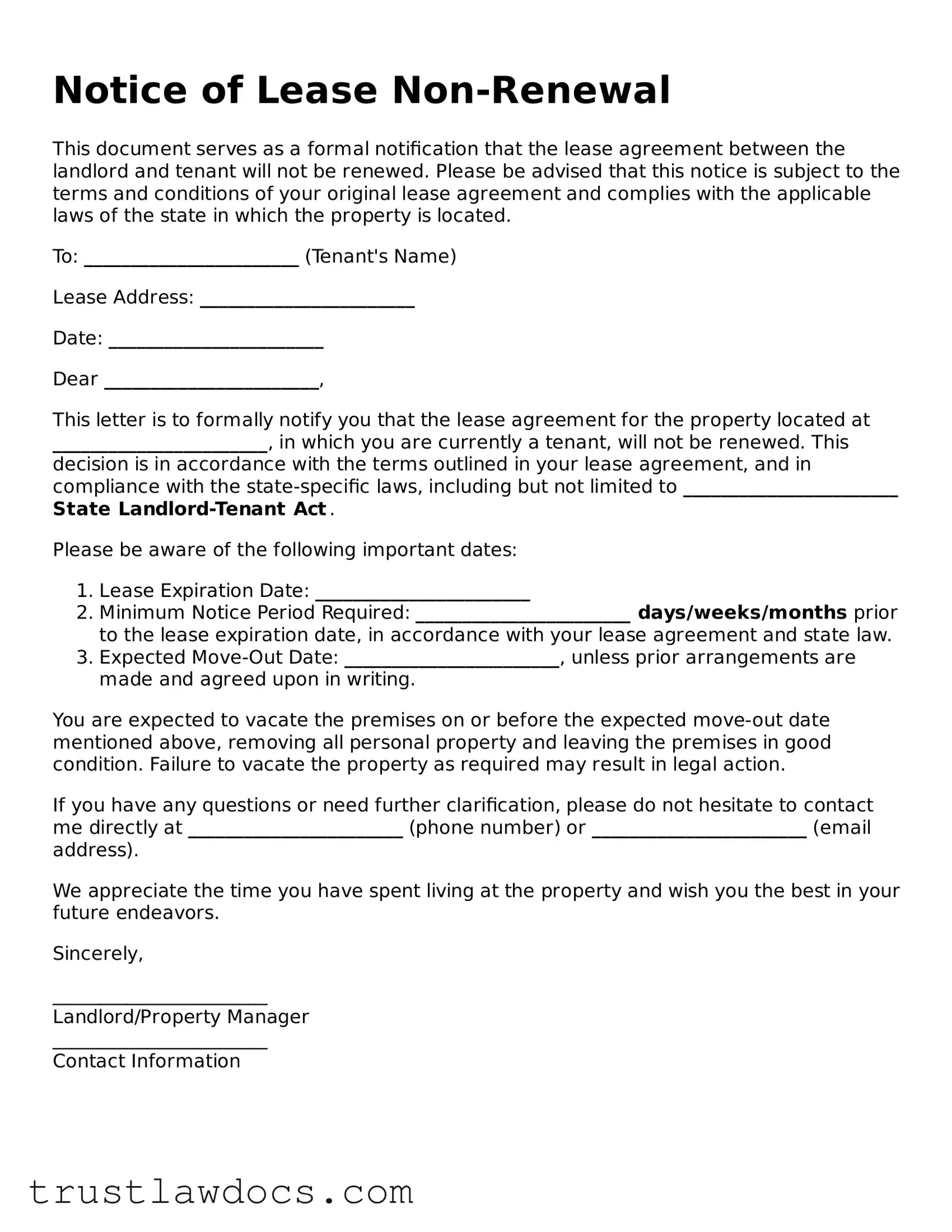What is a Notice of Lease Non-Renewal?
A Notice of Lease Non-Renewal is a document used by either a tenant wishing to inform their landlord they do not intend to renew their lease once it expires, or by a landlord to inform a tenant that the lease will not be renewed after its current term ends. It ensures both parties are aware of the end of the lease agreement and can make appropriate plans.
When should a Notice of Lease Non-Renewal be given?
The timing for delivering a Notice of Lease Non-Renewal varies by state and the terms of the lease agreement. Generally, it should be given 30 to 60 days before the lease's expiration date. However, it's crucial to check local laws and the lease contract for specific requirements.
Who can use a Notice of Lease Non-Renewal?
Both landlords and tenants can use a Notice of Lease Non-Renewal. Landlords use it to inform tenants they will not be offering a renewal of the lease, while tenants use it to communicate their intention not to renew the lease and vacate the property.
Is a Notice of Lease Non-Renewal legally binding?
Yes, a Notice of Lease Non-Renewal is legally binding once it meets local legal requirements and is delivered properly. It formalizes the intention not to continue the tenancy beyond the current lease term.
What information should be included in a Notice of Lease Non-Renewal?
A Notice of Lease Non-Renewal should include the date the notice is issued, the names of the tenant(s) and the landlord or property manager, the address of the rental property, a statement indicating non-renewal of the lease, and the lease end date. Some states or lease agreements may require additional information.
How do I deliver a Notice of Lease Non-Renewal?
Delivery methods can vary, but it's often recommended to provide the notice in writing and use a method that provides proof of delivery, such as certified mail. Check your lease agreement and local laws for specific guidelines on how to deliver the notice.
What happens if a Notice of Lease Non-Renewal is not given?
If a Notice of Lease Non-Renewal is not given as required, the lease may automatically renew according to its terms or local laws. This situation can lead to unintended legal and financial obligations for both the landlord and the tenant.
Can a Notice of Lease Non-Renewal be revoked?
Once delivered, a Notice of Lease Non-Renewal usually cannot be revoked without the agreement of both the landlord and the tenant. Communication and negotiation are key if either party changes their mind.
What if there are disputes about the Notice of Lease Non-Renewal?
If disputes arise regarding the Notice of Lease Non-Renewal, it's best to try resolving them through direct communication first. If that fails, consider mediation or consulting a legal professional to understand the rights and obligations of both parties.
Where can I find a template or form for a Notice of Lease Non-Renewal?
Templates for a Notice of Lease Non-Renewal can be found online through legal services websites, state government websites, or local tenant unions. Ensure any template used complies with local laws and regulations.
